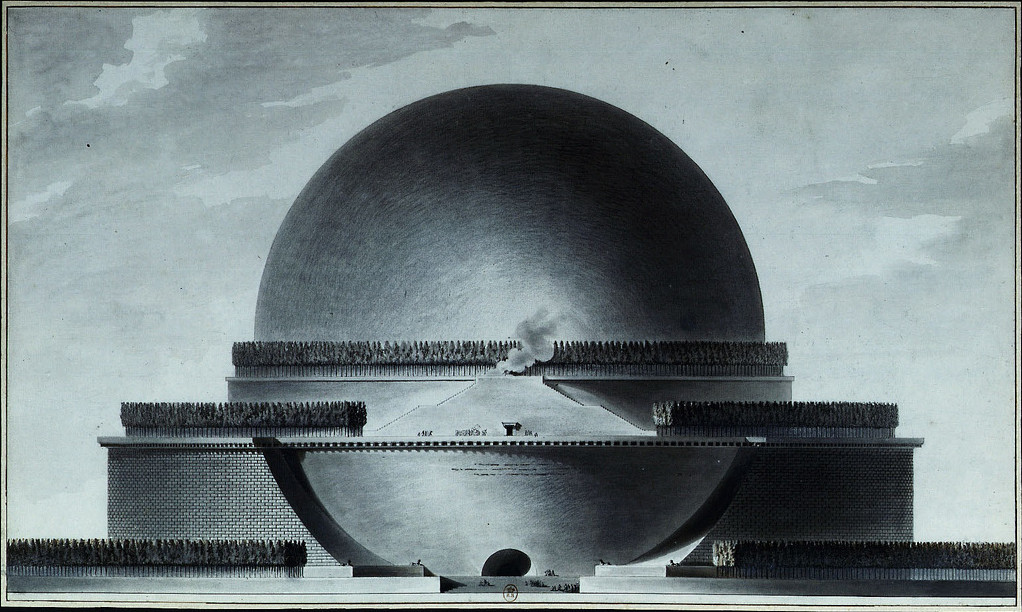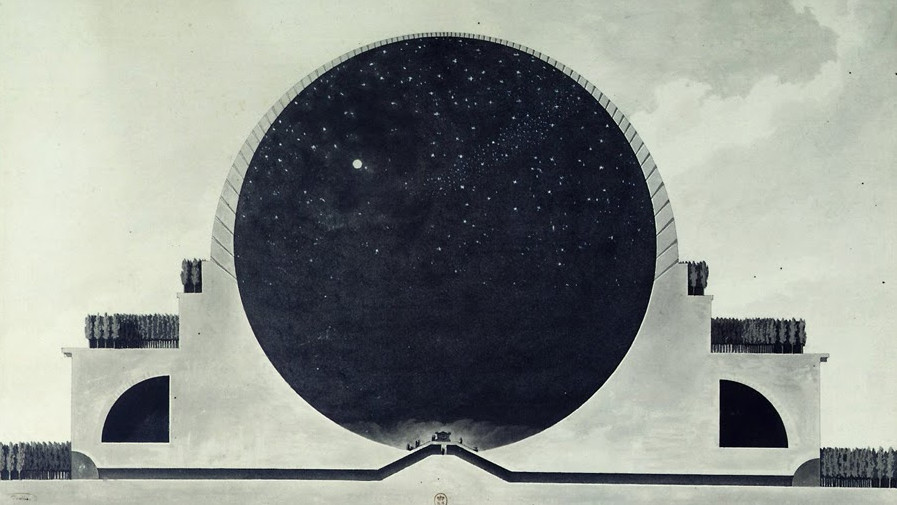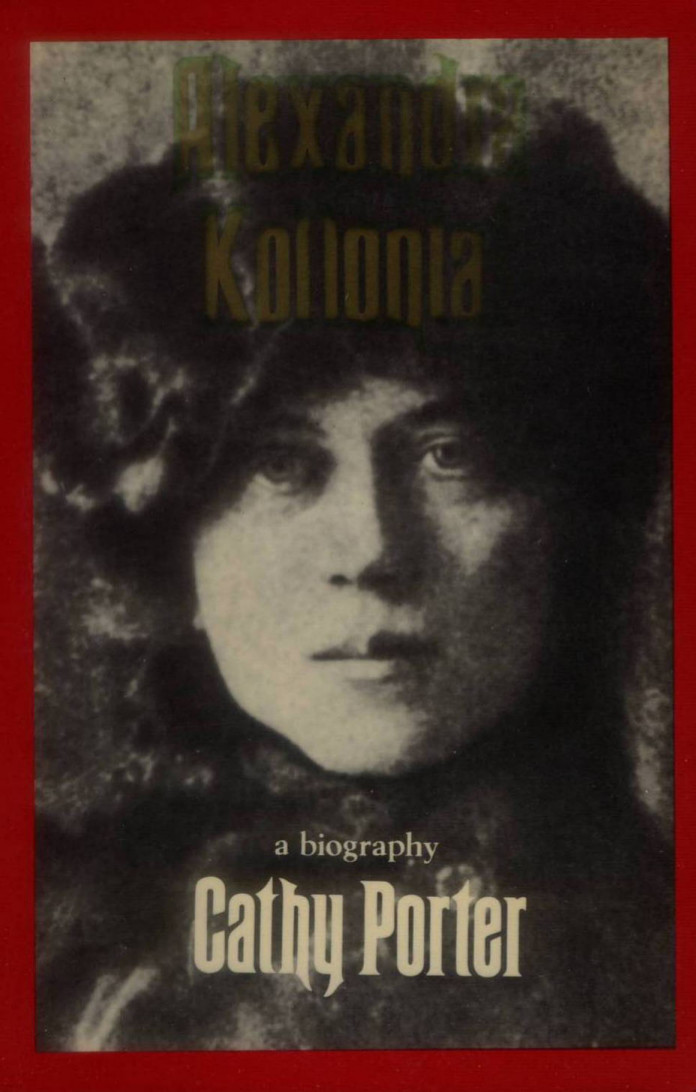Emil Kaufmann: Three Revolutionary Architects: Boullée, Ledoux, and Lequeu (1952)
Filed under book | Tags: · architecture, city, history of architecture, revolution



Étienne-Louis Boullée, Cénotaphe à Newton [Newton Memorial], 1784.
“Étienne-Louis Boullée (1728-1799), Claude-Nicolas Ledoux (1736-1806), and Jean-Jacques Lequeu (1772-1837) were each architects and thinkers whose ideas reflected some of the most radical strains of liberal bourgeois philosophy, with its cult of reason and devotion to the triplicate ideals of liberté, égalité, and fraternité. The structures they imagined and city plans they proposed were undeniably some of the most ambitious and revolutionary of their time. At their most fantastic, the buildings they envisioned were absolutely unbuildable — either according to the technical standards of their day or arguably even of our own.” (Ross Wolfe)
Transactions of the American Philosophical Society, New series. Vol. 42, part 3
Publisher The American Philosophical Society, Philadelphia, October 1952
564 pages
via Ross Wolfe’s Revolutionary precursors: Radical bourgeois architects in the age of reason and revolution
See also Boullée’s Treatise on Architecture.
Comment (0)Cathy Porter: Alexandra Kollontai: A Biography (1980)
Filed under book | Tags: · biography, communism, feminism, marxism, politics, revolution, russia, sexuality, socialism, soviet union, women

Alexandra Kollontai is “one of the most fascinating and least understood figures of the Bolshevik revolution. A feminist and a socialist, Kollontai defended a vision of emancipation premised on equality, comradeship, and personal autonomy, where society would take responsibility for domestic labour while enabling individuals freely to express their sexuality.” (source)
She was a key leader of the Russian Socialist movement, the only woman in the early Soviet government, and one of the most famous women in Russian history. She worked tirelessly all her life, as a speaker, writer, and organizer for women’s emancipation. This compelling biography recounts her life for an emerging generation of fighters for women’s liberation.
Publisher Virago, 1980
ISBN 0860680134
537 pages
Review (Tamara Deutscher, Marxism Today, 1980)
Review (Sarah Creagh, Socialist Review)
Commentary (Christine Sypnowich, Labour/Le Travail, 1993)
Commentary (Nick Evans, The Oxford Left Review, 2012)
PDF (no OCR)
Comment (0)R. Bruce Elder: Harmony and Dissent: Film and Avant-garde Art Movements in the Early Twentieth Century (2008)
Filed under book | Tags: · abstract cinema, art history, avant-garde, cinema, colour, constructivism, dissent, experimental film, film, film history, film theory, marxism, modernism, music, occultism, productivism, revolution, suprematism, symbolism, theology

“R. Bruce Elder argues that the authors of many of the manifestoes that announced in such lively ways the appearance of yet another artistic movement shared a common aspiration: they proposed to reformulate the visual, literary, and performing arts so that they might take on attributes of the cinema. The cinema, Elder argues, became, in the early decades of the twentieth century, a pivotal artistic force around which a remarkable variety and number of aesthetic forms took shape.
To demonstrate this, Elder begins with a wide-ranging discussion that opens up some broad topics concerning modernity’s cognitive (and perceptual) regime, with a view to establishing that a crisis within that regime engendered some peculiar, and highly questionable, epistemological beliefs and enthusiasms. Through this discussion, Elder advances the startling claim that a crisis of cognition precipitated by modernity engendered, by way of response, a peculiar sort of “pneumatic (spiritual) epistemology.” Elder then shows that early ideas of the cinema were strongly influenced by this pneumatic epistemology and uses this conception of the cinema to explain its pivotal role in shaping two key moments in early-twentieth-century art: the quest to bring forth a pure, “objectless” (non-representational) art and Russian Suprematism, Constructivism, and Productivism.”
Publisher Wilfrid Laurier University Press, Waterloo, 2008
ISBN 1554580285, 9781554580286
480 pages
Review: David Sterritt (Quarterly Review of Film and Video, 2011).
PDF (updated on 2019-12-14)
Comments (7)
